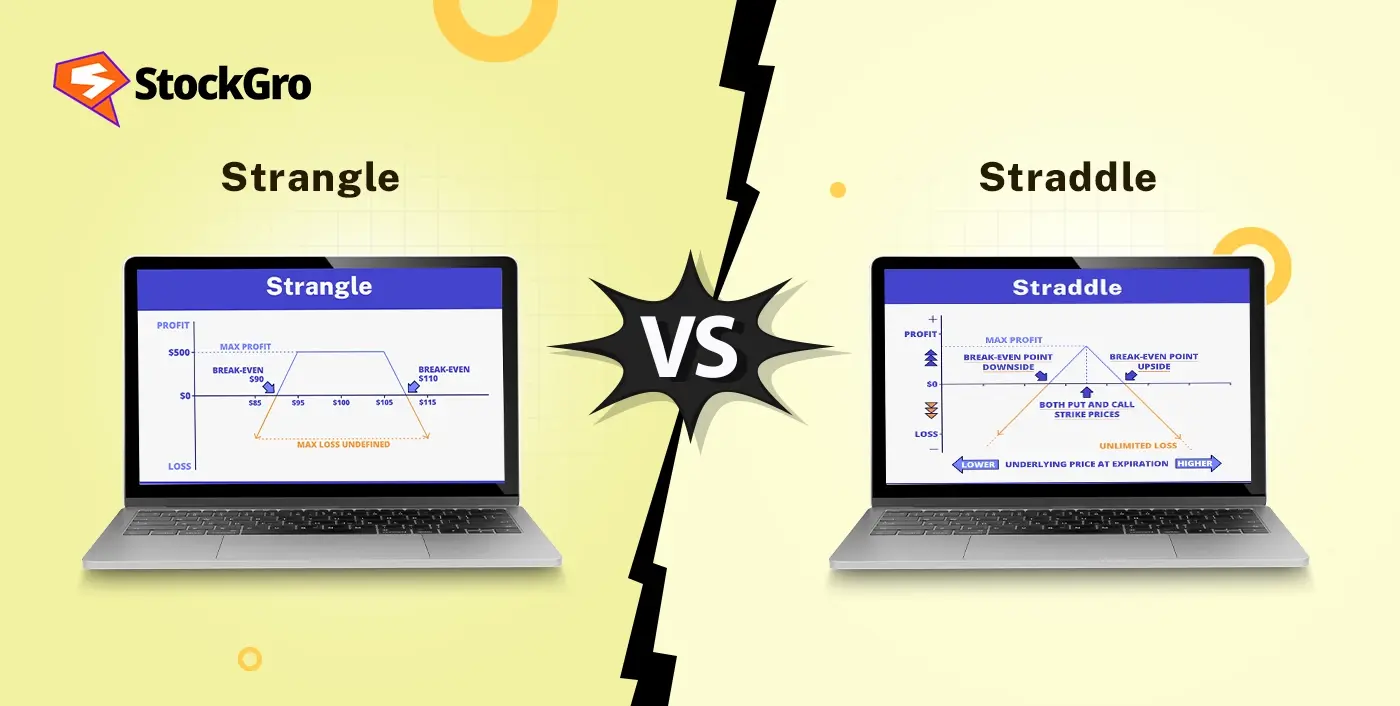
Even experienced traders sometimes watch profitable options slip away because human reflexes can’t match the speed of the market. Algorithmic options trading solves this problem by putting rules and data analysis on autopilot. With instant execution, constant monitoring, and precise calculations, algorithms transform the frantic pace of options trading into a structured, strategic process. The result? Traders can focus on strategy while technology handles the high-speed mechanics of the market. From understanding how it works to discussing popular strategies, and regulations, everything you need to know about algorithmic options trading is covered in this blog.
What is Algorithmic Options Trading?
Algorithmic options trading, or algo trading uses software programs to trade options based on rules involving time, price and volume. The system finds opportunities, places orders and manages trades without human action. This removes delays caused by human intervention and errors that can occur when entering orders manually. By using computational power in options trading it’s possible to process lots of market data and respond instantly. The aim is to make the execution process faster, more consistent and free from emotional decision making so trades can be done in a structured way.
How Does Algorithmic Options Trading Work?
Algo trading works by turning a trading plan into a program that trades automatically. Here’s how the program works:
- The trader designs a strategy with clear rules for entering and exiting trades, risk limits and position sizing.
- These rules are coded into an algorithm using a suitable programming language.
- The algorithm connects to a brokerage platform through an API, so it can send and receive trading instructions.
- It monitors live market data, compares it to the pre-set rules.
- When the right conditions appear, the algorithm sends trade orders instantly to the exchange via the broker.
- The speed of execution helps to capture opportunities that may only last seconds.
- Once trades are placed, the algorithm can adjust, close or manage them based on the same rules without human intervention.
Benefits & Risks of Algorithmic Options Trading
Algorithmic options trading offers advantages and comes with certain risks. Here are the benefits of investing in algo trading:
- Speed: Algorithms can execute trades in seconds, much faster than manual trading. This is valuable in options markets where prices can change in a split second.
- Accuracy: Reduces manual mistakes such as entering wrong order quantities, selecting the wrong strike price or wrong order type.
- Rule based execution: Ensures trades follow a clear set of rules rather than emotions or impulsive decisions.
- Backtesting: Allows you to run a strategy on historical data before you apply it live. This allows you to understand its performance historically.
- Multi-asset monitoring: Can monitor multiple contracts, underlying assets and market indicators at the same time, which is hard for a human to manage.
Here are the risks of investing in algo trading:
- Technical failures: Software bugs, system crashes, internet disconnections or power outages can stop trade execution and impact results.
- Over-optimization: Strategies that are too well fitted to past data will look good in testing but fail when market conditions change.
- Supervision needed: Even with automation, you still need to monitor the system, check orders and respond to unusual market events.
- Programming errors: A bug in the code can lead to unintended orders, wrong calculations or big losses in a short time.
- Market impact: Large orders from algorithms can sometimes move market prices and you trade at levels you didn’t expect.
Popular Algorithmic Strategies for Options
Algorithmic systems are often used to execute complex positions that require precise monitoring and adjustments. Here are the few of the most effective options trading strategies:
- Delta neutral strategies
These strategies aim to create a position that is largely unaffected by small price changes in the underlying asset. The “delta” ascertains how far an option’s value shifts compared to the underlying asset. Algorithms continuously track the total delta of the portfolio and automatically buy or sell options or the underlying asset to keep it near zero. Frequent adjustments are needed as market conditions change, and automation allows these trades to happen instantly. By handling multiple positions at once, algorithms reduce the manual effort required to maintain delta neutrality while helping maintain consistent risk exposure.
- Iron condor bots
The iron condor strategy consists of writing both a put spread and a call spread on the identical asset with matching expiry. This strategy generally benefits from low-volatility markets. Automated systems can identify ideal entry points based on price levels or volatility metrics. Once the position is open, the bot can monitor movements in the underlying asset and close trades if prices approach the breakeven points. It can also make minor adjustments to maintain risk limits, which would be difficult to do manually. Using automation ensures that the strategy follows predefined rules consistently and reacts quickly to market changes.
- Calendar spread automation
Calendar spreads include purchasing and writing options of identical type and strike while using varying expiration periods. The strategy takes advantage of time decay and changes in implied volatility. Algorithms can track theta (time decay) and vega (volatility) across both options and execute trades when specific profit or loss targets are reached. Automation ensures precise timing for entering and exiting trades and allows simultaneous monitoring of multiple calendar spreads. It further lowers the chance of mistakes from humans while handling positions that are time-dependent.
Tools & Software for Algorithmic Options Trading
Algorithmic options trading depends on a mix of tools that support everything from designing strategies to placing trades in live markets. The main categories are as follows:
- Trading platforms with API access: These platforms have an Application Programming Interface (API) that allows a custom built algorithm to talk directly to the broker’s system. Through this link the algorithm can place, adjust and close orders automatically, no manual execution required.
- Programming languages and libraries: A coding setup is required to write the trading logic. Popular languages in this space often include specialized libraries for financial analysis, mathematical modeling and integration with broker APIs, makes it easier to create and refine strategies.
- Backtesting software: Before going live, strategies can be tested against historical market data to see how they would have performed in the past. Backtesting highlights possible weaknesses and helps improve strategy rules before committing capital.
- Data providers: Accurate and up-to-date price feeds are necessary for historical analysis as well as actual execution. This can include real-time price feeds, historical datasets and implied volatility figures which can be sourced from brokers or specialised data services.
Building Your Own Options Trading Algorithm
Creating an options trading algorithm is a step-by-step process that blends trading knowledge with coding skills, as follows:
- Define the strategy
Write down the exact trading logic. Decide the conditions for entering trades, price levels, volatility ranges or time triggers. Set exit rules for profit and loss, stop-loss and profit targets. Specify position size so the system knows the capital portion to assign to every order. Clear and precise rules make the coding process easier.
- Choose the technology
Choose a programming language that can handle financial data, do calculations and integrate with external systems. Match this with a broker that has an API, the channel between the code and the live market. The decision often depends on existing familiarity and the availability of libraries that simplifies data handling and order execution. A well chosen setup makes building and scaling the algorithm easier.
- Get market data
Access to both historical and real-time data is required. Historical data allows the strategy to be tested against past conditions, highlighting strengths and weaknesses. Real-time data allows live monitoring and execution. Ensure that the dataset remains precise, uniform, and covers option values, volatility measures, and market depth details. Without good data even a well coded algorithm will give wrong results.
- Code the algorithm
Write the defined rules into program logic. The code should read incoming data, apply the strategy’s conditions and send orders through the broker’s API. It should also handle order modifications, cancellations and trade lifecycle management. Good coding makes the algorithm respond fast to market changes.
- Perform risk management
Add protective features to the system. Stop-loss levels, max trade size limits and overall exposure caps. A kill switch to pause all trading if something goes wrong or technical errors occur. Risk control inside the algorithm makes it disciplined always.
Backtesting & Optimising Your Algo Strategy
Once you’ve built your algorithmic options trading strategy, the next step is to test and refine it before live deployment. Backtesting and optimisation ensure the strategy is reliable and adaptable. The essential elements are as follows:
- Run backtesting
Backtesting refers to applying a trading method on previous market records to examine how it could have performed earlier. It helps determine whether the rules are effective without risking actual money. Key metrics reviewed include profitability, win-loss ratios, maximum drawdown, and risk-adjusted returns. By examining these results, traders can identify whether a strategy is logically consistent and worth refining further.
- Gathering quality data
The reliability of any backtest depends on the quality of data used. Incomplete, inaccurate, or limited datasets can create misleading results. High-quality data should include practical market conditions such as transaction costs, bid-ask spreads, and price slippage. Accounting for these details provides a realistic assessment of how the strategy might perform in real markets. Clean and comprehensive data ensures that the test mirrors actual trading environments rather than producing inflated results.
- Following the optimisation process
Once initial testing is complete, strategies often go through optimization. This involves adjusting input parameters such as moving average lookback periods, strike price ranges, or volatility thresholds. Each variation is tested against historical data to identify combinations that yield consistent improvements. Optimization helps fine-tune performance so the algorithm remains effective across different market situations, rather than being limited to a single type of condition.
- Avoiding over-optimisation
A common risk during optimization is overfitting, where the algorithm is tailored too closely to past data and fails in live use. Over-optimized models capture noise instead of genuine patterns. To counter this, strategies are tested on out-of-sample data, which acts as a fresh dataset excluded from earlier testing. If the algorithm performs reliably here, it is more likely to adapt successfully to live markets.
Regulations & Compliance to Know
Algorithmic options trading in India operates under SEBI’s framework, aiming to encourage innovation while maintaining market safety. The main rules and requirements are as follows:
- Mandatory exchange and broker approval: Every strategy must be approved by the stock exchange before going live. Brokers review and register the algorithm on behalf of clients, and any changes to an approved version require re-approval.
- Unique algo IDs and audit trails: Approved algorithms receive a unique ID, which is attached to every order they generate. This ensures traceability so that any irregular activity can be linked to a specific strategy and user.
- Strict API security: Trading APIs must be secured with whitelisted static IPs, two-factor authentication, and mandatory session logouts at the end of the trading day. This reduces risks of unauthorized access.
- Broker accountability: Brokers are responsible for enforcing safeguards such as “kill switches” to halt faulty strategies and throttling mechanisms to control excessive order flow.
- Registration of self-developed algos: Individuals creating their own strategies must register them via their broker if their usage crosses a set order-per-second limit.
- Classification of algos: SEBI distinguishes between “white box” (transparent logic) and “black box” (proprietary logic) algorithms, with black box providers required to register as research analysts.
Final Thoughts
Think of algorithmic options trading as your co-pilot. Always alert, always consistent and always ready to pounce on opportunities as they appear. It’s not about replacing your judgement but amplifying it with automation. With the right balance of testing, optimisation and discipline an algo can help you cut through the noise, reduce uncertainty and focus on strategy over stress. In a market where milliseconds count, your algorithm isn’t just a system, it’s your edge.
FAQs
Algorithmic options trading uses computer programs to automatically trade options based on pre-defined rules. It processes lots of data fast to remove emotional bias. This is to speed up, improve accuracy and consistency in trading complex options strategies in volatile markets.
Backtesting runs your algorithm’s rules on historical options data. This helps you see if your strategy would have worked in the past, find strengths and weaknesses and adjust before using real capital. Many platforms and python libraries have tools for structured and repeatable options strategy backtesting.
Automating options trading requires coding your strategy, often in python, and connecting it to a broker’s API or a compatible platform. This sets up the system to monitor market conditions, generate trade signals and execute orders automatically, no human intervention required and faster execution.
The best tools for algorithmic options trading are broker APIs for trade execution, trading platforms that allow algorithm development and backtesting and programming libraries for historical data analysis and strategy modeling. These resources help automate, test and manage option trades across different market conditions.
It can be profitable with a well tested algorithm and good risk management. But results are not guaranteed. Market conditions change and strategy flaws or excessive risk can lead to losses. Monitor, update and discipline is important for consistent profits in algorithmic options trading.
Yes, retail traders can now thanks to broker APIs, accessible platforms and open-source libraries. With some coding skills, retail traders can research, test and deploy their own algorithms using public data and tools, making automated options trading more accessible than ever.
Python is the easiest and most powerful for financial libraries, you can develop and test trading algorithms quickly. While C++ and Java offer more speed or large scale reliability, Python’s simplicity and community support make it the best choice for most traders.
The best tools for algorithmic options trading include broker APIs for trade execution, trading platforms that allow algorithm development and backtesting, and programming libraries for analyzing historical data and modeling strategies. These resources help automate, test, and manage option trades efficiently across different market conditions.

